The purpose of job analysis is to identify the skills, knowledge, and expertise needed to effectively perform job assignments, to develop the criteria for selection and promotion, to develop training and development objectives, to develop performance measurement standards, and to assist in determining pay classification levels. It explains the distinction between a job evaluation and a job analysis and defines standard procedures and routines.

JOB ANALYSIS
Understanding Job Analysis
In this, activities and responsibilities are examined in detail, as well as how important the job is in relation to other jobs, and what qualifications are necessary to perform the job. The idea that the task is evaluated rather than the person performing it is crucial.
Despite the fact that the two tasks are very distinct, job analysis and job evaluation are frequently conflated. The practice of comparing a job to other jobs within an organization in order to determine the proper pay rate is known as job evaluation, and it is not included in this guide.
Motives for why businesses spend time on job analysis
The performance of an organization’s employees determines its success. Each job should ideally relate to others in order to maximize the attainment of the organization’s mission, goals, and objectives. The knowledge of each employee’s position by management affects the ROI (ROI). Because of this, many Human resource professionals view this as a crucial component of efficient HR practice.
Typically, it is documented using a questionnaire, and the result is a job description that includes precisely stated work specifications (i.e., needed or desired credentials) for the job holder.
Within a company, job analysis is used for the following purposes:
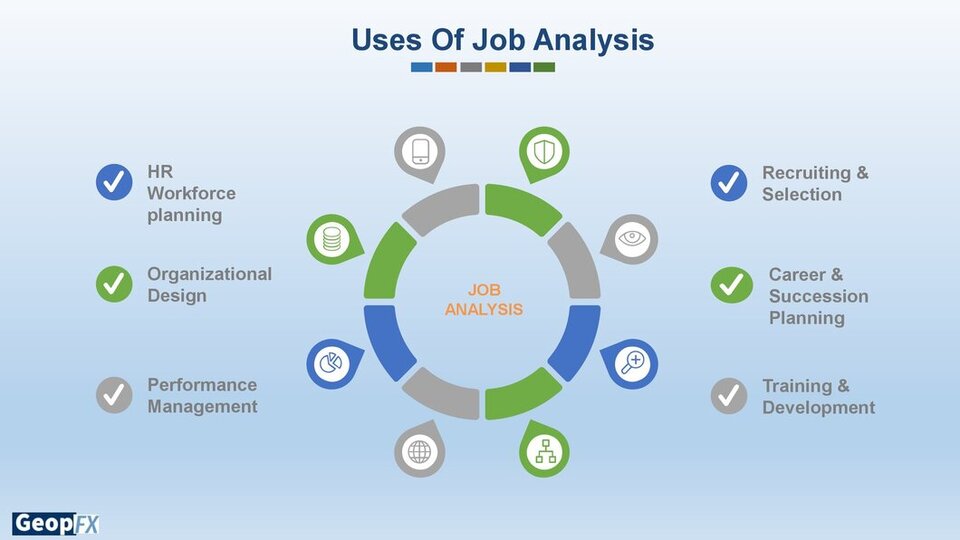
HR’s role in conducting job analysis
The functions that the company needs are identified by HR professionals, together with the optimal organizational setup and cost. Additionally, HR promotes the remuneration structure as a fair means of fostering high levels of performance and employee engagement.
To guarantee that the process is successful, line management and the HR department must collaborate closely. An example of how line management and human resources are typically split up is shown below. The job description, which includes job specifications, is the result of the this analysis.
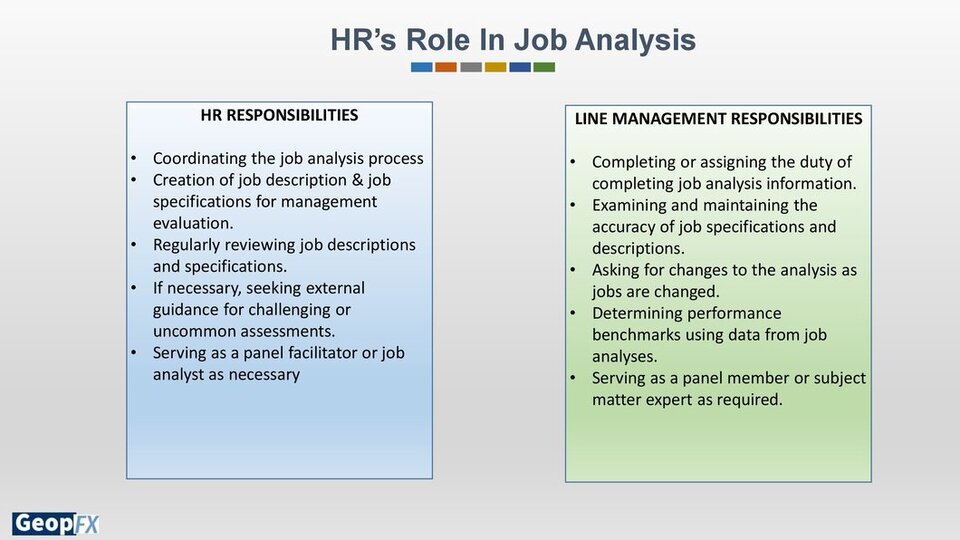
Job Analysis and Data Collection
The process of job analysis entails gathering data on the characteristics that distinguish jobs distinctive. The following aspects help in differentiating various jobs:
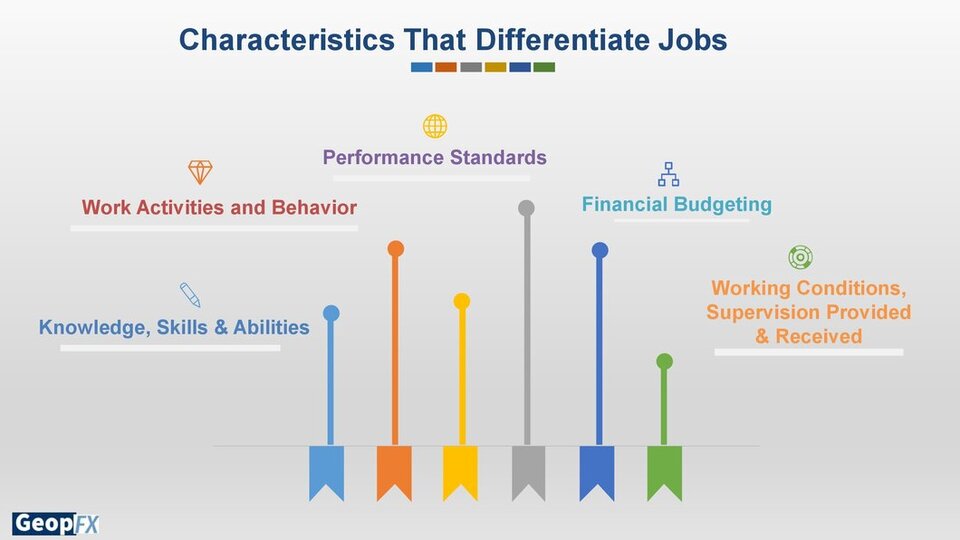
By defining the job family, job responsibilities, and tasks associated with related work, grouping jobs with related functions can be useful in the analysis process.
The example that follows shows how a company could group comparable jobs:
Job family: Grouping of related jobs with broadly similar content
Job: A individuals’ whole job assignment is made up of a group of tasks, obligations, and responsibilities.
Task: A clear description of what a person performs, with related tasks grouped together into a task dimension (i.e., a classification system).
Job Analysis Techniques
It might be challenging to identify the tasks that employees perform. Direct observation is influenced by the observer’s perception. If possible, personally interviewing the most qualified candidate is the most efficient method to get information.
Ideally, use two methods, such as direct observation and structured questionnaires from the job incumbents, or interviews and open-ended questionnaires from them. The most popular techniques for are described below.
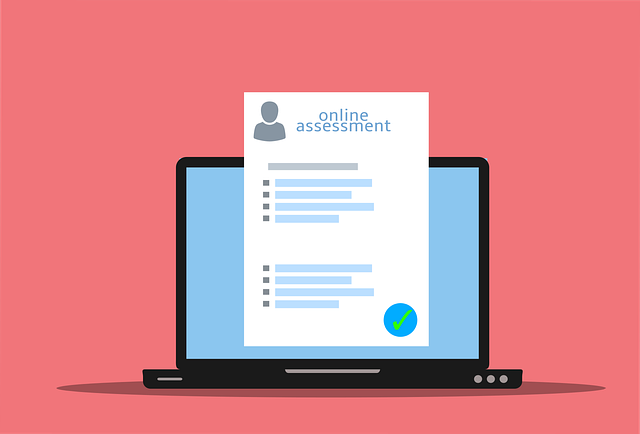
Open-ended questionnaire
Questionnaires describing the KSAs required for the job are often filled out by job holders and, on occasion, by their supervisors. A composite statement of job requirements is published once HR compiles the responses. With the support of employees and managers, this strategy creates appropriate job requirements and aids in the analysis of numerous jobs with constrained resources.

Highly structured questionnaire
In order to ascertain the frequency, relative importance, and skill requirements of various tasks, these questionnaires only accept specified responses. The structured questionnaire aids in the objective definition of a position and allows for computer model analysis.

Interview
In a face-to-face interview, the interviewer gets the information they require from the employee regarding the KSAs required to carry out the job. The interviewer employs pre-planned questions, then depending on the employee’s response, asks more follow-up questions. For professional jobs, this technique is effective.

Work diary or log
An employee may keep a work diary or log that details the frequency and timing of tasks. Over time, the employee keeps logs. HR examines the logs, finds trends, and converts them into tasks and responsibilities. This strategy produces a huge amount of data, but a lot of it is hard to understand, unrelated to the job at hand, and hard to keep up with.
Other Approaches
With more individuals working in matrix reporting structures and cross-functional project teams, the idea of a “job” is evolving. As a result, job analysis techniques that concentrate on the KSAs necessary to carry out the main tasks and duties of a particular job have gained prominence.
The competency-based analysis known as behavioral event interviewing is different from the standard job analysis, which only evaluates tasks, activities, and responsibilities. Interviewing based on behavioral events.
- Future performance areas are determined by a group of senior managers who are focused on the organization’s business and strategic goals.
- HR puts together panels made up of people familiar with the positions held by the company (i.e., subject matter experts). High- and low-performing employees, managers, supervisors, trainers, and other individuals may be a part of these categories.
- Interviews with panel members are conducted by an HR facilitator or a third party expert to elicit examples of job behavior and actual workplace events.
- The facilitator creates thorough descriptions of each competency, using clarifying phrasing.
- Members of the panel determine the levels necessary to meet them after HR rates the competencies.
- Each job’s performance standards are determined by HR. The company must create and use competency-based selection, screening, training, and remuneration tools and processes.
Job descriptions and specifications
HR creates a job description and job specifications using the results of the job analysis. The job description and specifications are typically merged, but divided into sections to allow for separate modification as necessary. Below is a list of the sections that make up a job description.
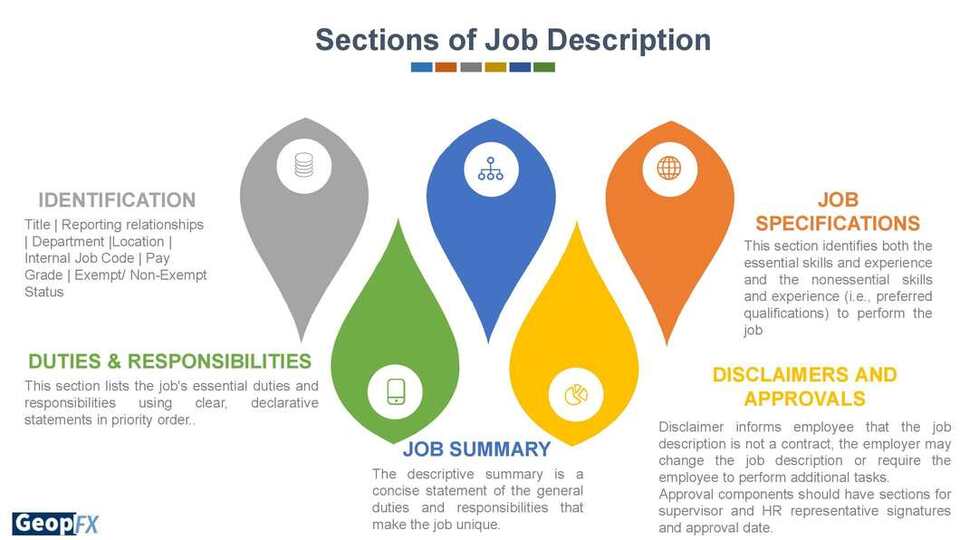
Job Analysis Activity
Each activity entails a distinct set of duties, and the employees are granted the necessary authority to carry out these duties. Additionally, employees must complete these tasks precisely and report their progress to the organization via their direct superiors. Therefore, having a clear grasp of what they are responsible for becomes a requirement for the efficient use of organizational resources.
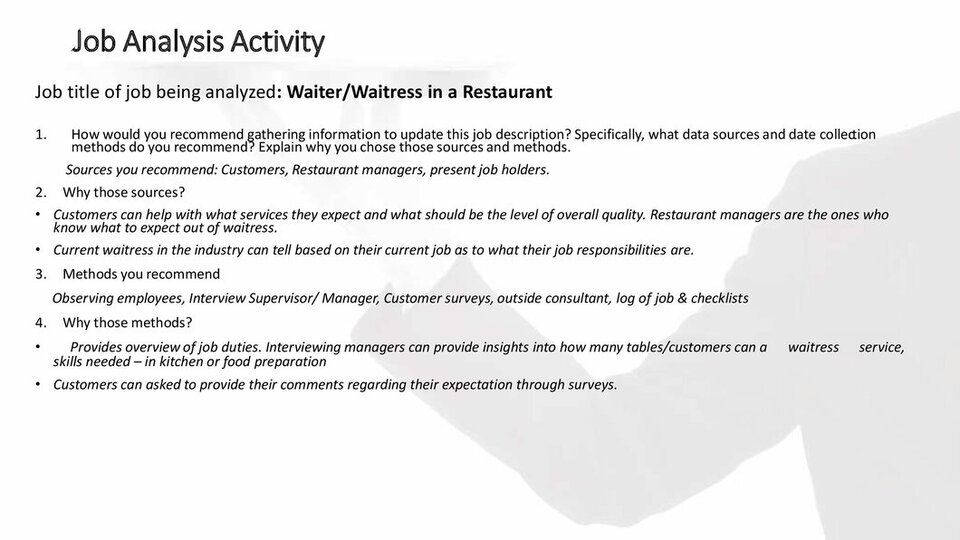
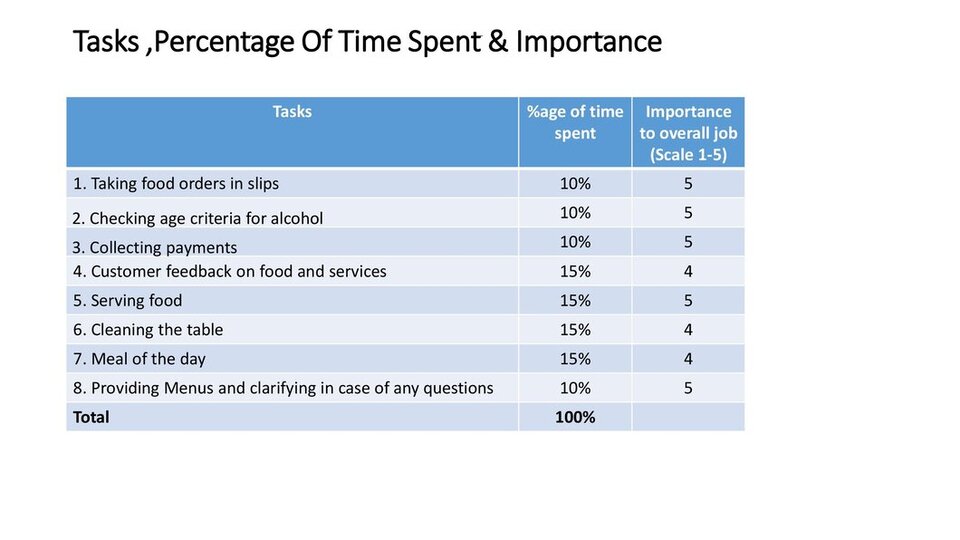
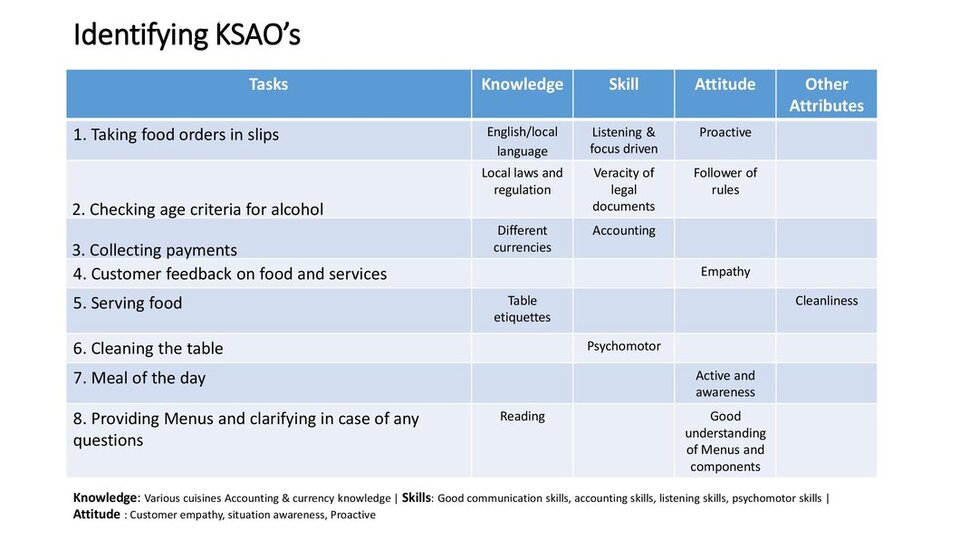
Conclusion
An organization’s human resources must be managed effectively, and this requires thorough job analysis. It serves as the foundation for decisions about employee health and safety, career management, job evaluation, performance evaluation, training and development, compensation fixing, and human resource planning.
It is now perfectly normal for your employee’s goals and needs to change. Therefore, after creating your analysis, continue to update it. Continue to improve the job analysis to advance the career of your employee. Check to see if the job analysis needs any new responsibilities or results. You can notice that role expectations change over time by looking at what your competitors are describing, the morale of your company, employee feedback, and more.


